
The concept of account-based marketing (ABM) was introduced by ITSMA in 2003. ABM made the first appearance on Google Trends in 2013. In the past few years, the number of ABM software companies has skyrocketed, along with agencies that specialize in ABM, and B2B companies that have adopted ABM programs.
ABM is here to stay, and it continues to gain traction as an initiative that can capitalize on high-value accounts, shorten the sales cycle, and align efforts of sales and marketing teams.
How are marketers gaining a competitive advantage with their ABM strategy?
A new Ascend2 research study, Account-Based Marketing Approach, asked 261 marketers to provide their experiences and insight on ABM.
Here are five noteworthy account-based marketing statistics and findings from the Asend2 research study:
34% of marketing professionals are planning for ABM in the future.
Only 22% of companies report having a measurable ABM strategy in place. Another 14% are rolling out an ABM pilot program. and 34% are planning for ABM in the future. Even though ABM has seen dramatic growth, there is still a lot of growth to come. If you feel like you are too late to start an ABM program, you may be timing it just right, as more tools are available, case studies and blueprints to follow, and experts to assist you in the process.
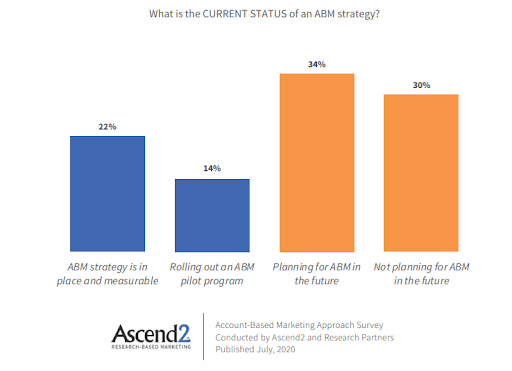
65% of marketing professionals describe their ABM strategy as somewhat successful.
If you are a B2B company with a complex sale, ABM works. About two-thirds (65%) of marketing professionals describe their ABM strategy somewhat successful at achieving the primary objectives set for it. Marketers representing companies with strategies sophisticated enough to be considered “best-in-class” represent about one-quarter (22%) of those surveyed. The key takeaway here is that ABM works.
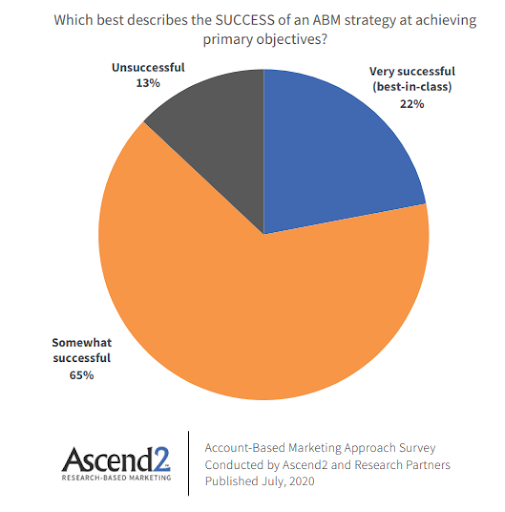
37% of marketers find it challenging to get adequate budget and resources dedicated to account-based initiatives.
37% of marketers find it challenging to get adequate budget and resources dedicated to account-based initiatives. Marketing and sales alignment is also a top challenge for 32% of marketers who recognize that the two work in harmony is essential to the success of an ABM program. Data quality issues also present an obstacle for 29% of marketers to overcome.
Don’t underestimate the importance of marketing and sales alignment. Both groups need to be working together to choose target accounts, determine what content to produce, improve the quality of data, etc.
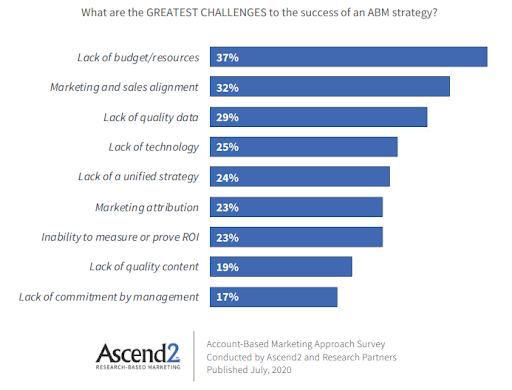
Lifetime customer value is the most vital data to acquire and track on an account, according to 41% of marketing professionals.
ABM relies heavily on using data to personalize the experience for contacts from targeted, high-value accounts. But which data is most important to keep track of? Lifetime customer value and an account’s financial information are the two most important pieces of data to collect and track for ABM according to 41% of marketers.
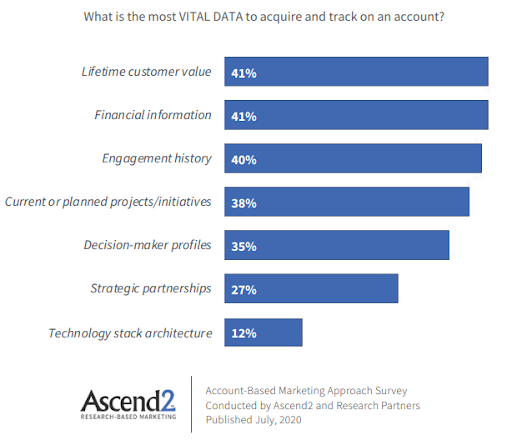
Target account revenue generated is the number one success metric for ABM, according to 44% of marketers.
Measuring return-on-investment for ABM is essential to strategic success. Metrics based on the account level, such as target account revenue generated and target account engagement are reportedly the most helpful in measuring the success of an ABM program according to 44% and 42% of marketers, respectively.
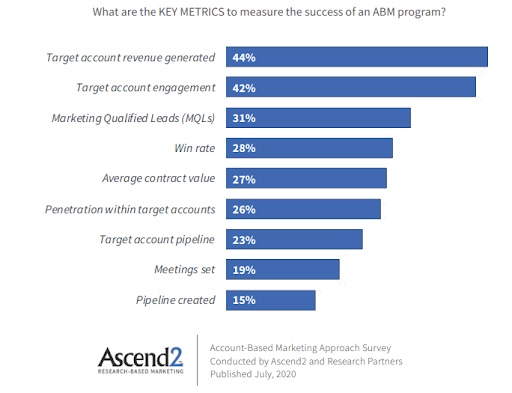
Ready to get started? Here are the 10 steps to launching your own account-based marketing program.
- Do your homework and formalize a plan before you start. Download the Account-Based Marketing Approach report, other research studies, case studies, and how-to articles.
- Get buy-in from the executive leadership team and the sales department.
- Set goals so everyone knows what success is and works together to meet the goals
- Identify high-priority target accounts.
- Develop a profile of decision-makers and influencers that you will need to engage with at your target accounts.
- Create the content needed to engage with your target accounts and contacts.
- Choose the proper channels and tactics.
- Choose the proper technology.
- Plan and execute campaigns.
- Measure, analyze, and optimize the program.

